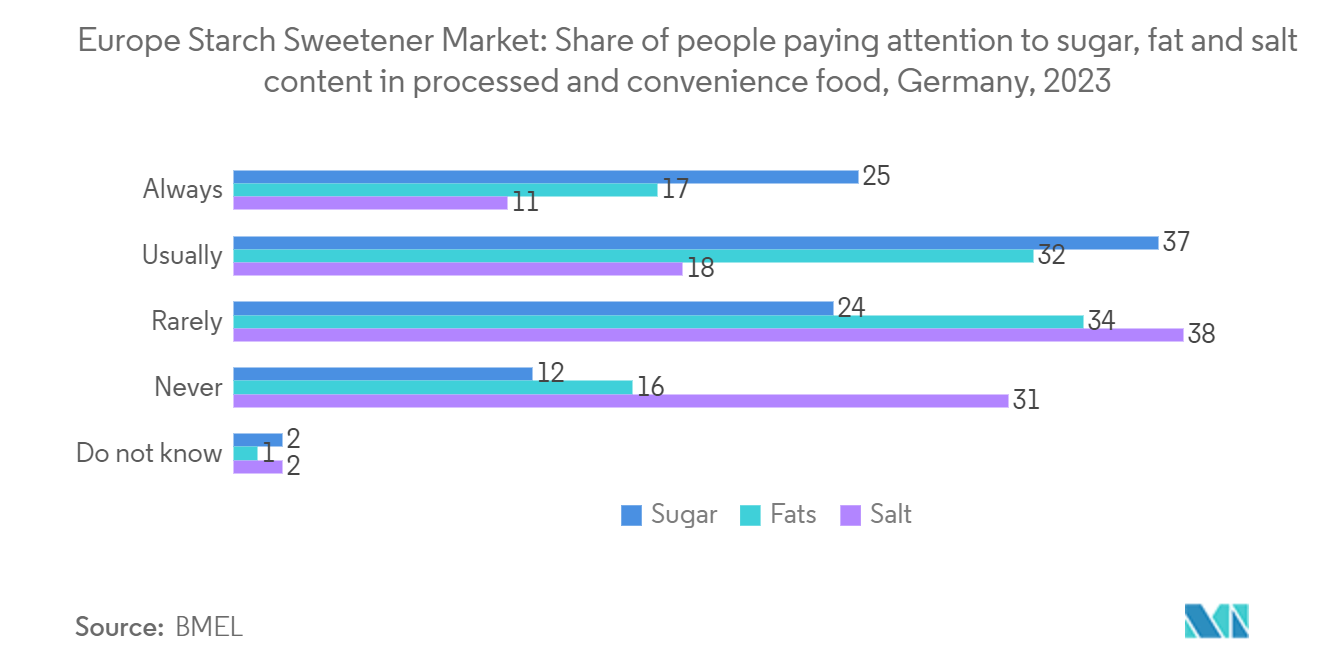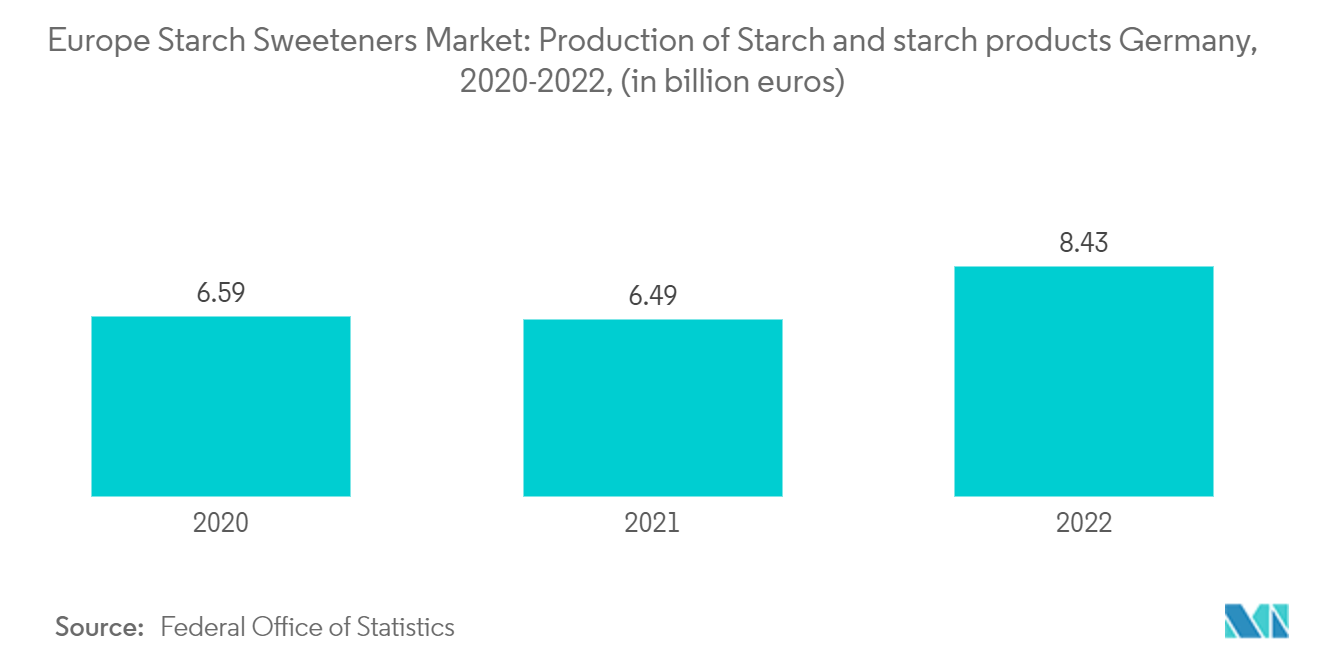Market Trends of Europe Starch Sweetener Industry
Increasing Application of Sweeteners in Processed food
Europe is one of the largest markets for starch sweeteners across the globe. The European Starch Industry states that the region produces over six hundred products, from native starches to physically or chemically modified starches and liquid and solid sweeteners. The quest to reduce calories has made food manufacturers look for sucrose replacements with various substitutes. Most of their product offerings are sweetened with bulk sweeteners or sugar substitutes. Sweeteners are ubiquitous in products, such as ketchup, whole-wheat bread, salad dressing, yogurt, and even breakfast cereals. Due to the rising prevalence of obesity and diabetes, consumers are looking for ways to curb their sugar intake and protect themselves from the adverse health effects of weight gain. This has led the region to record the highest number of new product launches with low-calorie sweeteners such as Stevia, providing a subtle taste to the food. Starch-based sugars meet the demand for sweetening mixtures and bring additional functionality to numerous food products, contributing to the texture, color stability, and flavor of the final product while also remaining economical. Manufacturers choose the low-calorie sweetener, either on its own or as a blend, based on taste considerations, stability, and cost. Additionally, many starch manufacturers invest in the European market to support the local economy and community while positioning the business for long-term growth.

Germany Holds a Major Share in the Market
The German national diet is diverse and one of Europe’s largest food and beverage markets. Increasing health awareness and the resulting demand for healthy substitutes drive the market for starch sweeteners in Germany. The expanding application of starch sweeteners such as glucose in the confectionery segment is creating a positive outlook for the market. Glucose syrups are used in confectionery mainly for their anti-crystallizing role, while in brewing, they are used primarily to impart sweetness to the final product. Glucose syrups can adapt, as with the starch from which they result, into various products, each developing specific properties. Furthermore, High Fructose Corn Syrup is a prominent additive in German baked goods for surface browning, moisture, structure, and texture. It is also widely used in beverages, bread, jams, and jellies as a preservative and other foodstuffs to stabilize emulsions and enhance flavor. Therefore, key players are partnering and investing in the manufacturing of sweeteners to meet the rising demand for sweeteners in the country. Thus, innovations in natural sweeteners are boosting the overall sweetener market in the country.


